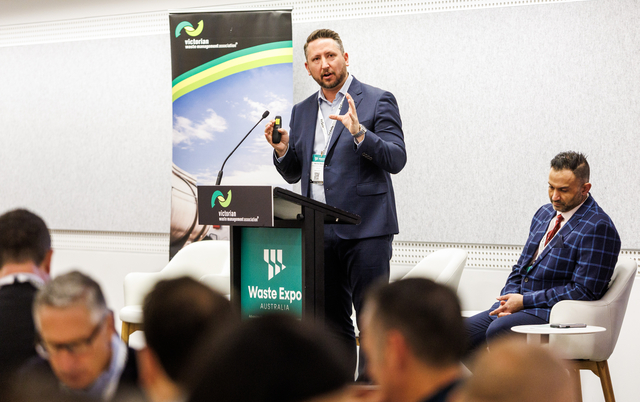The Good Oil by Rod Brown *
My industry and regional network, Cluster Asia Pacific Inc, has some great members and friends across Australia, so we often check the rainfall situation in the regions via www.bom.gov.au Did you realise that the central west and New England regions of New South Wales have virtually no weather radar coverage? This is an appalling state of affairs for farmers and horticulturists in this heartland agricultural belt. There are some important regional centres there too including Parkes, Forbes, Bathurst, Orange, Tamworth and Armidale. So I emailed the Bureau of Meteorology for a ‘please explain’. What a saga! I should’ve known better!
Anyway, the reply came back as follows, “You are correct that in NSW we lack radar coverage over the central west between Moree and Wagga Wagga radars. A couple of years ago the Federal Government gave the Bureau special funding to upgrade the radar network nationally, and this included funding to install a new radar southwest of Tamworth. The expected completion date is in 2007.”
Mmm – that means five years from decision to completion, I thought. Surely these regions shouldn’t have to wait that long – and there’s a fair chance of it being 2008 with the usual delays in this sort of stuff. So I checked with the National Farmers Federation to see if others had complained.
Got the Ted Whitten flick pass from the receptionist and someone else, so I asked to have yarn with the CEO. I am still waiting. Meanwhile a NFF adviser emailed me to say that “the NSW Farmers Federation share similar concerns to yourself”.
So I spoke to a staffer in then Agriculture Minister Warren Truss’ office, and I forwarded a draft of this article to get things rolling. I asked if Minister Truss and the very recent Deputy PM John Anderson (and local member!) could bring the funding forward on the basis of special circumstances, such as helping farmers with their crop sowing decisions, water purchases, agistment, cattle sales and the like. I got a few questions like, “Sorry, where are you from again?” My reply was “Taxpayer and regional champion.”
A nice chap in Truss’ office referred me to the office of the Parliamentary Secretary for the Environment where, after a bit of to’ing and fro’ing, a nice lady advised me that, ‘preparations are underway. The funding has been allocated. This area will get one of only six world class Doppler radars in Australia. This will provide some of the best weather coverage in the world and we will not take unprepared risks in the delivery or risk the quality’.
I wasn’t buying the risk line. So I asked her to please explain. If I get another flick pass, then we definitely know that Treasury is running the country.
ATCs – lessons from the US
Despite their achievements, few think of community colleges as bastions of creativity or particularly ‘cool’ places. Effective, yes – but not places with strong reputations for arts, culture, or places that are likely to attract students – or for alumni, retirees, and knowledge intensive companies. But community colleges offer convenience and value to students and companies. Because so many of their students are local, have families, and work full time, they do not serve the same social function. The community college is where people commute – sometimes long distances – to acquire skills, credits or simply pursue interests and then return to their homes, families and jobs.
US development expert, Stu Rosenfeld, gave addresses in Perth and Ballarat in late June, where we trust he touched on the role of community colleges as models for the Australian Technical Colleges. In case you missed it, the Feds are funding 24 Australian Technical Colleges (ATCs) across Australia, at a total cost of $351 million. Not small change.
New research helps Sydney become a ‘Smart City’
A new research paper, Innovation at the Edges: The role of Innovation Drivers in South West Sydney, identifies some of the unique drivers of innovation in metropolitan regions.
It suggests that regional Councils can spearhead innovation development through low cost initiatives, such as encouraging networking opportunities and establishing channels to transmit information freely. Produced by the AEGIS Research Centre at the University of Western Sydney, the paper also creates a blueprint for future innovation policy development by ‘unpacking’ the established concept of innovation and applying it to where we live.
AEGIS Chief Investigator, Dr Cristina Martinez Fernandez, says, “This study shows that boosting innovation doesn’t necessarily mean massive cash injections. It’s about encouraging business sectors, regional organisations and the community to connect with each other in new ways, explore the expertise and knowledge that already exists on its doorstep, and investigate opportunities for new links with the Sydney metropolitan area.”
Dr Martinez-Fernandez says most previous studies have focused on the economic factors that drive innovation, ignoring the equally important social and environmental factors.
“The most successful companies are those that have a strong sense of responsibility for and interaction with their local community,” she explains. “Elements such as liveability, accessibility and community engagement are seen as strong innovation drivers. An important innovation driver is knowledge intensive service activities, or KISA. They require a high level of intelligence or expertise in areas critical for the company’s innovation – the number of knowledge providers in the region, what expertise they have, and whether local businesses know how to find them.”
The study says that Campbelltown is well placed for development as a regional innovation hub – education, knowledge, accessibility to services, jobs and mobility. Camden is seen as an attractive place to live with a significant quality of life. Wollondilly can gain significant advantage through developing innovation drivers such as knowledge intensity, knowledge transmission, and accessibility.
To access the report, go to aegis.uws.edu.au/innovationedges/main.html
Gee whiz – ‘Making Canberra work for you’ workshops
We are running our workshops all over Australia. Below is an extract of one of the eleven modules. This module deals with ‘Developing Action Plans’ and is proving very popular. Contact us for more details.
- Be clear and focused – Canberra is a madhouse of paper and scraps of information. Ministers, staffers do not want to read a document twice. Submissions must have a summary – what is it, why, where, how much, and outcomes!
- Project a sense of ‘Strategic Intent’ – Canberra runs on strategies. Proposals must fit the strategic thrust.
- Have a vision – the ‘gee whiz’ factor.
- Use project champions – credible proponents, relevant to the issue. Use them as sanity checks.
- Connect, follow up, connect, follow-up, connect…
Contact Australian Project Developments on (02) 6231 7261 or email apd@orac.net.au
* Rod Brown’s Canberra based consultancy group, Australian Project Developments Pty Ltd, specialises in industry/regional development and government liaison. For further information telephone (02) 6231 7261 or email apd@orac.net.au







